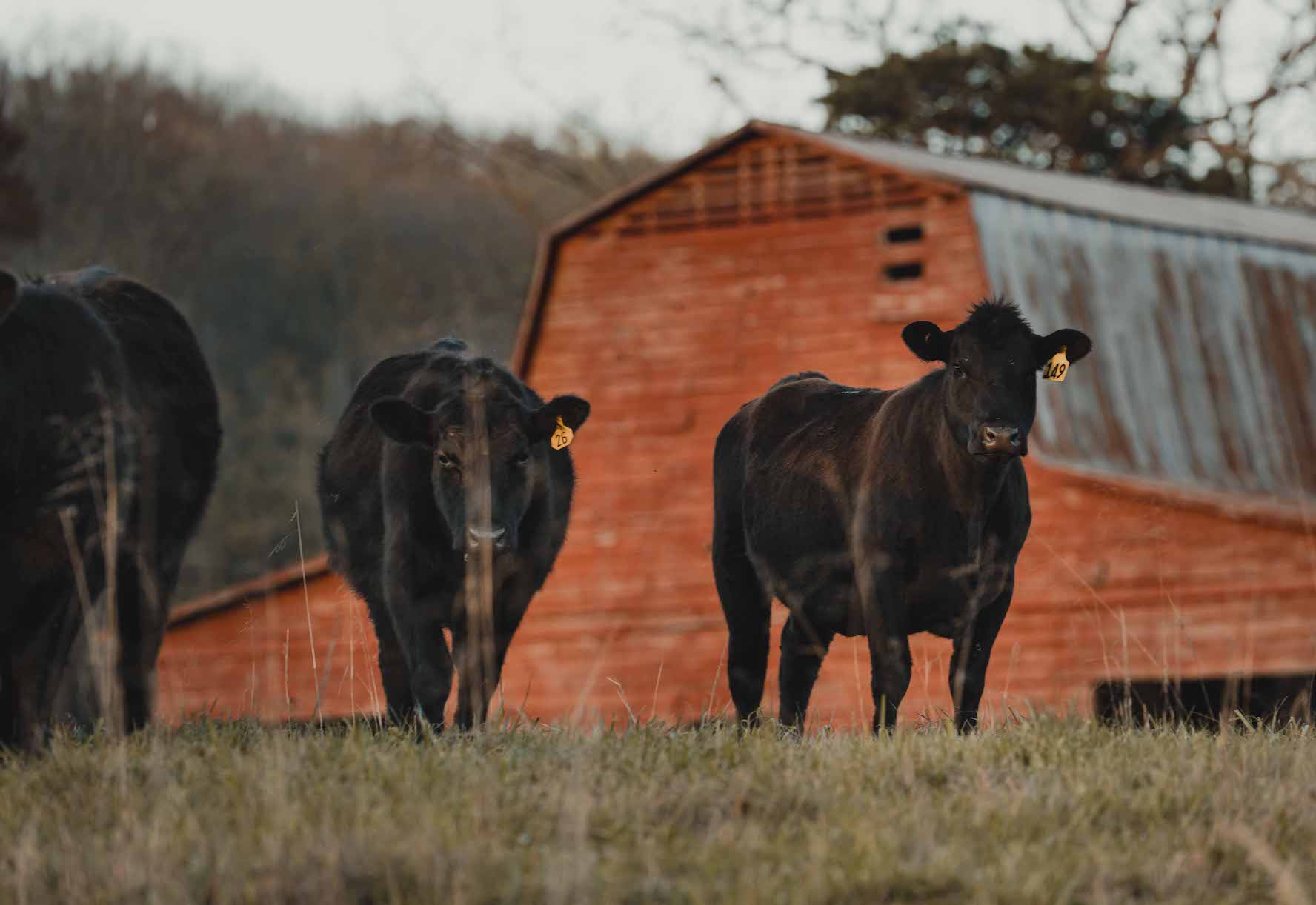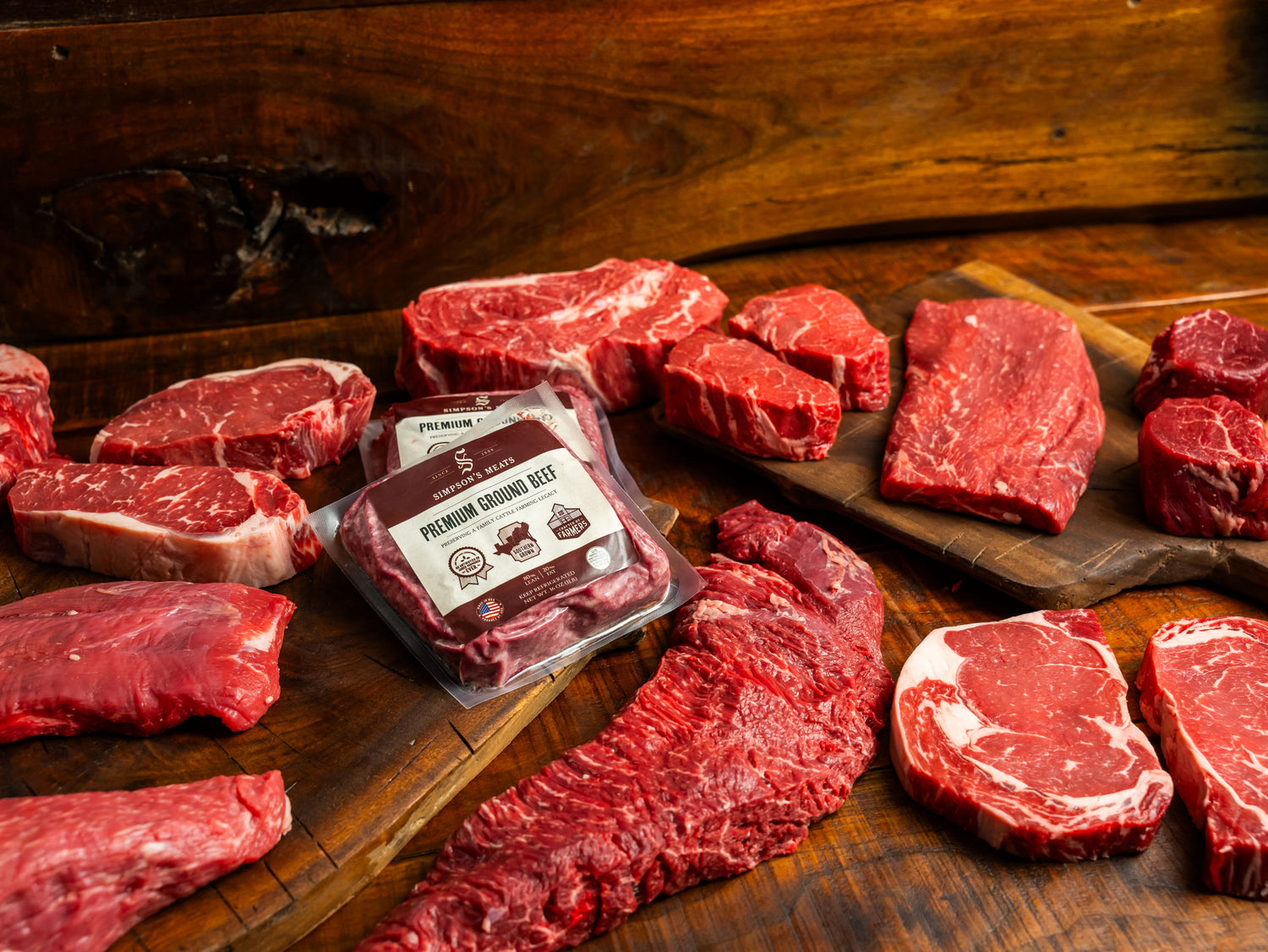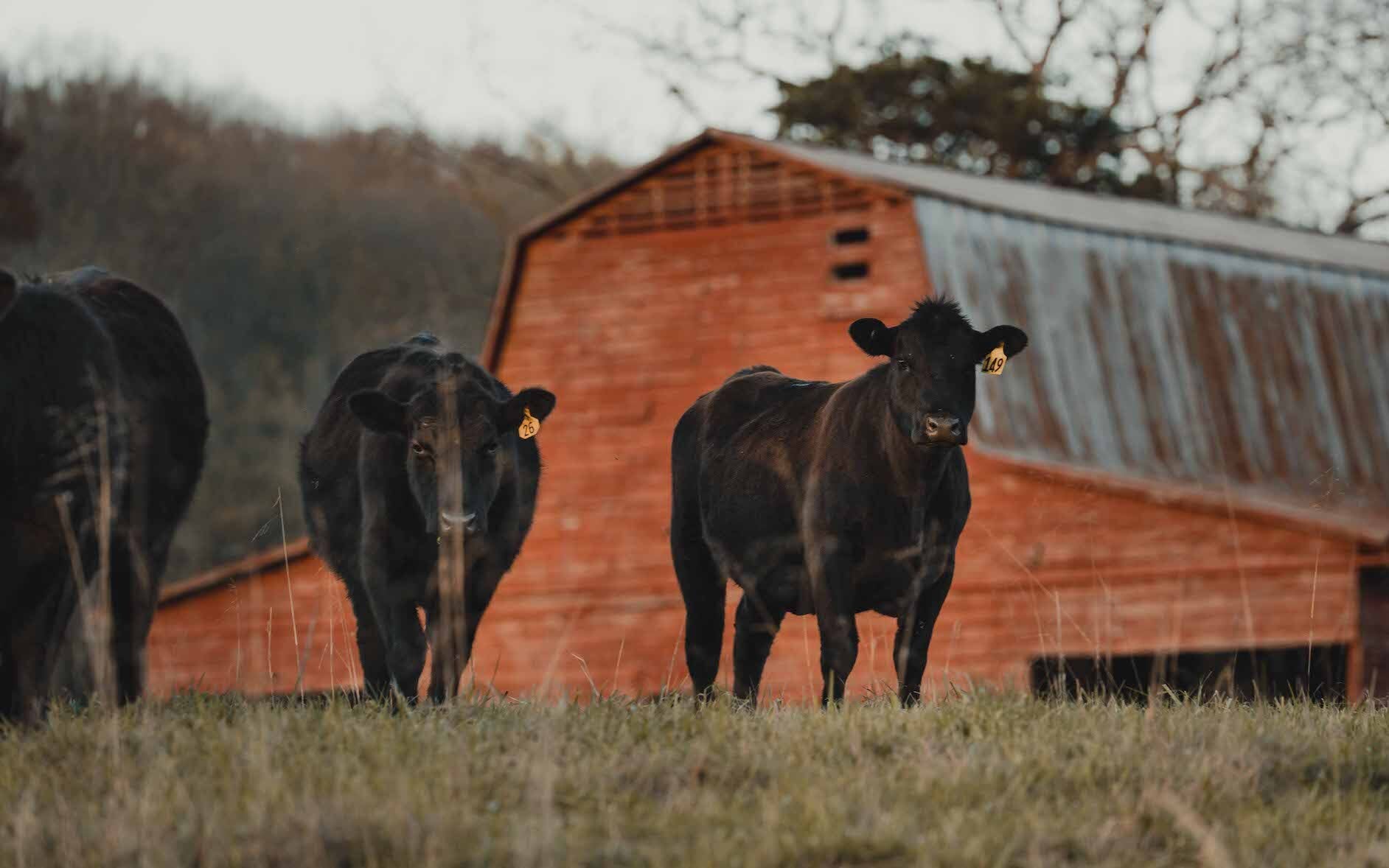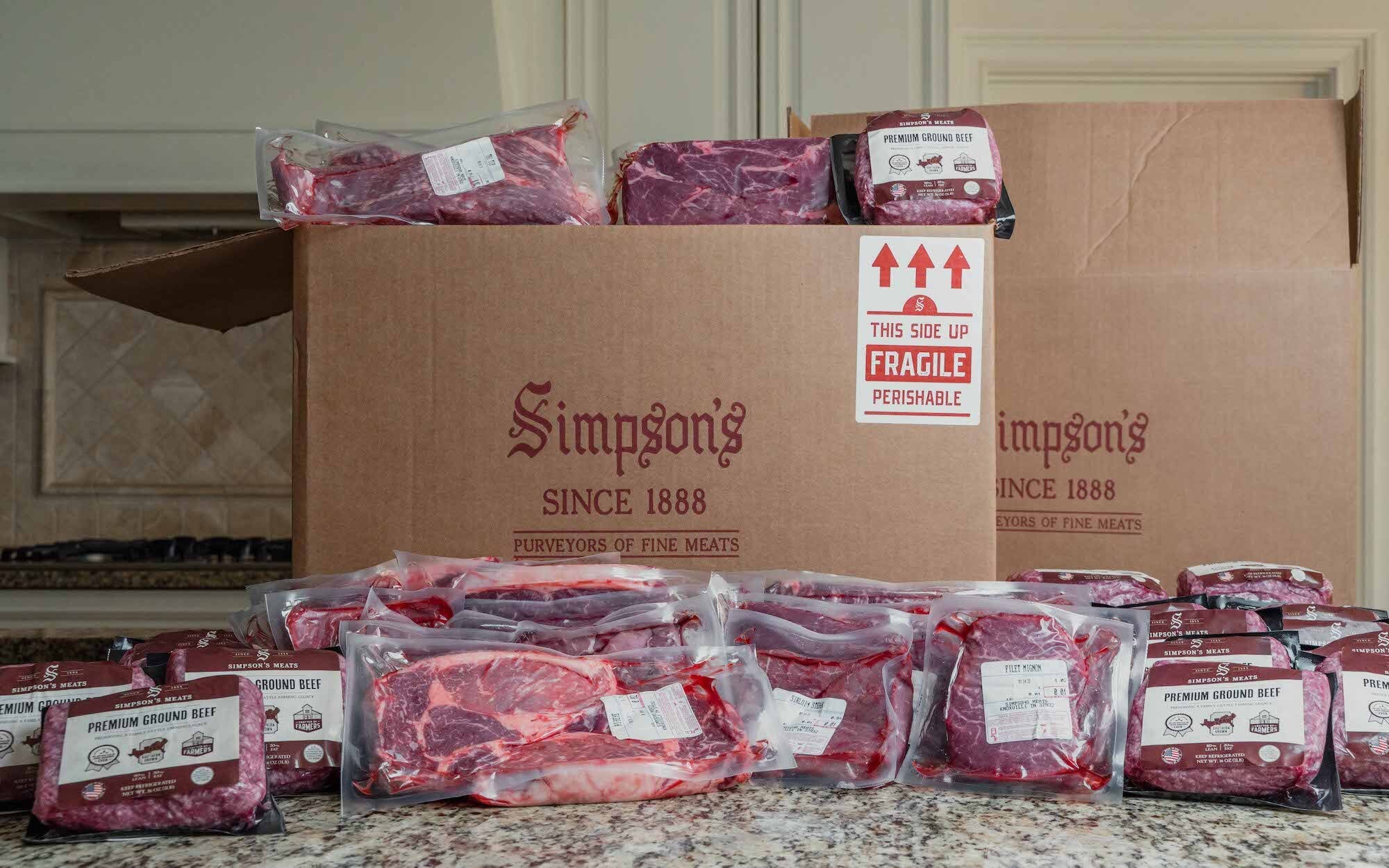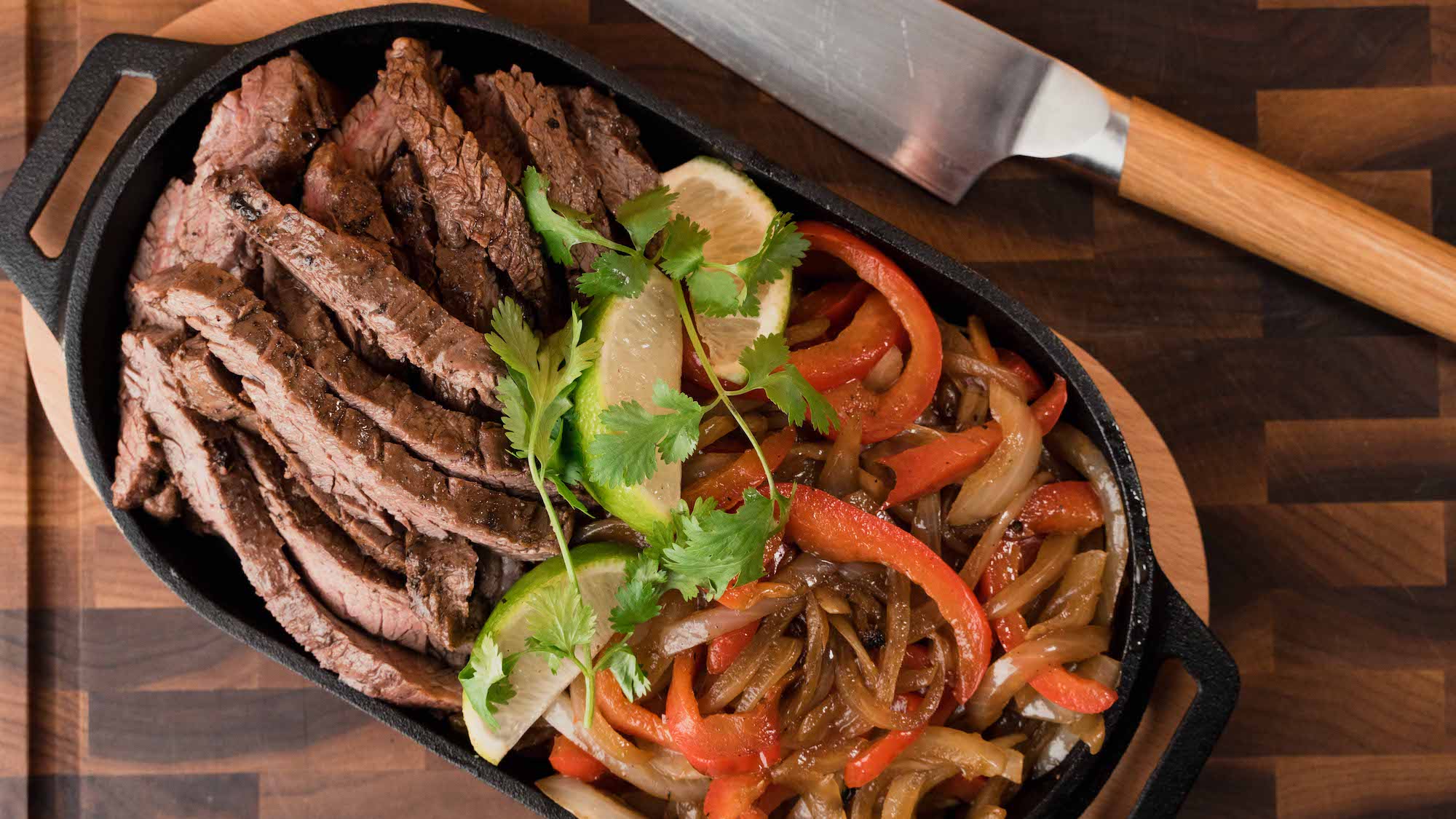Buying a half cow for your meat supply is a smart move if you want high-quality meat at a great price.
But, there's a big question: How long will a half cow last before you need to shop again?
After all, that’s a big investment.
In this guide, we'll help you plan your family’s beef supply.
We’ll also dive into what makes your half-cow stay good for as long as possible—and share some top tips on storing it well so it stays fresh.
Understanding Your Half Cow
When you buy a half cow, you're getting a lot more than just beef. You're getting a variety of cuts that can turn into delicious meals. Let's look at what you'll find in your half cow package:
- Steaks: Get ready for juicy ribeyes, tenderloins, and sirloins. Perfect for grilling or a fancy dinner night.
- Roasts: Think big, hearty meals like chuck roast, brisket, and rump roast. These are great for slow-cooking Sundays.
- Ground Beef: The all-rounder of the kitchen. Make burgers, tacos, or spaghetti sauce. The possibilities are endless.
- Stew Meat: These are the perfect chunks for your hearty stews and slow-cooked meals. Think warm, comforting bowls during the cold months.
- Short Ribs: Ideal for barbecuing or slow braising, short ribs promise a rich, flavorful meal that falls off the bone.
- Liver: Packed with nutrients, beef liver can be an acquired taste but is excellent for pâtés or simply pan-fried with onions.
- Soup Bones: These bones are great for making nutrient-rich broths and stocks, adding depth to soups and sauces.
- Oxtail: Known for its rich flavor, oxtail is fantastic for slow-cooked dishes, making savory soups, and stews that are sure to impress.
Understanding these cuts helps you plan. You'll need to think about the right way to freeze them and how to fit them into your meals. We'll get into those details next, so you're all set with your half cow.
How Long Does Half a Cow Last?
A half cow typically gives you about 200 pounds of beef. On average, a half cow can last you 6 to 12 months, depending on how much you’re eating and how big your family is.
Here are some breakdowns, based on your family size:
How Long Does a Half Cow Last a Family of 4?
For a family of four, a half cow should last you 6-8 months.
A quick example: let's say your family eats an average of 8 lbs of beef per week.
With about 200 to 250 pounds of beef from a half cow, you're looking at right around 6 months of meat.
Couple with No Kids
A couple eating 5 pounds per week would mean a half cow can last you 8-12 months—which is exactly how long it stays fully fresh for in your freezer.
Solo Diner
For one person, if you want to eat a half cow in a year, you’ll need to eat 8-10 pounds a week. Hope you’re hungry!
Light Eaters
If you’re a family of 4 and you only go through about 4 lbs of meat per week, your half cow would last you right around 12 months.
Meat Lovers
If you're a couple who’s big on meat and you consume about 15 pounds a week total, you would need a restock in 3-4 months.
How Long Does a Half Cow Last in the Freezer?
Getting a half cow is a big deal, and the last thing you want is to waste any part of it.
On average, a half cow would last you 12 months in the freezer, assuming that it is vacuum sealed and properly stored.
However, for optimal quality, different cuts of beef have recommended storage times in the freezer:
For example:
- Steaks and roasts: These cuts maintain their best quality for 6 to 12 months in the freezer. After this time, they're still safe to eat but may begin to lose some of their flavor and tenderness.
- Ground beef: This should ideally be used within 6-12 months as well. Beyond this, it can become dry or develop freezer burn, although it remains safe to consume.
The key to making your half cow last and getting the most out of your investment is proper storage and organization. Here's how to do it:
Proper Freezing Practices
The way you freeze your beef makes all the difference. Here's what you need to keep in mind:
- Temperature Control: Keep your freezer at 0°F (-18°C) or lower. This keeps your beef safe and tasty for longer.
- Airtight Packaging: Use vacuum-sealed bags or heavy-duty freezer wraps. This keeps air out and prevents freezer burn, which can ruin the flavor and texture of your meat.
- Avoid Freezer Burn: Besides airtight packaging, make sure to remove as much air as possible before sealing. Freezer burn isn't unsafe, but it makes your meat dry and less tasty.
Tracking Inventory
Knowing what you have and how fast you're using it can help you plan better. Here are some tips for keeping track:
- List What You Have: Make a list or chart of all the cuts you received from your half cow. Include everything from steaks to ground beef.
- Use a System: Whether it's a whiteboard, a notebook, or a digital app, find a way to track what you use. Mark off each cut as you use it.
- Plan Ahead: Keep an eye on what's left and how quickly you're going through it. This helps you plan your meals and know when it's time to reorder or supplement your beef supply.
By following these steps, you'll ensure your half cow stays fresh and delicious right until the last cut. Plus, you'll always know what you have on hand for meal planning, making your life a little easier and a lot tastier.
Shelf Life Factors
Temperature Impact
Keeping a steady, cold temperature in your freezer is super important. Here's why:
- Stay Cold: Your freezer should always be at 0°F (-18°C) or even a bit colder. This keeps your beef safe and slows down any spoilage.
- Consistent Temperature: Avoid big temperature changes. They can mess with the quality of your beef, leading to freezer burn or other issues.
Packaging Influence
How your beef is wrapped can also affect how long it stays good. Let's look at two main way your meat may be packaged:
- Vacuum Sealing: It sucks out all the air and keeps your meat safe from freezer burn and dehydration. It's one of the best ways to keep your beef tasting fresh for a long time.
- Traditional Wrapping: This might be with butcher paper or plastic wraps. It's okay, but not as good as vacuum sealing. Air can still get in and affect the quality of your meat over time.
Frequency of Freezer Access
How often you open your freezer matters more than you might think:
- Keep It Closed: Every time you open your freezer, warm air sneaks in, and the temperature can go up. Doing this a lot can make the temperature inside less stable, which isn't great for your beef.
- Plan Ahead: Try to think about what you need from your freezer before you open it. This way, you can grab everything at once and keep the warm air visits to a minimum.
Humidity Control
Managing the moisture levels inside your freezer can also play a crucial role in preserving your beef's quality:
- Moisture Levels: Freezers with an automatic defrost feature can cause slight fluctuations in humidity, which might contribute to freezer burn.
- Use Desiccants: Placing desiccants (moisture absorbers) in your freezer can help maintain a dry environment, reducing the risk of freezer burn.
Freezer Organization
How you organize your freezer can impact the shelf life of your beef as well:
- Air Circulation: Proper organization ensures good air flow around your beef cuts. This helps maintain consistent temperature throughout the freezer.
- Sectioning: Group similar cuts together and keep frequently used items near the front. This minimizes the time the freezer door stays open and reduces the temperature fluctuations.
By keeping these factors in check, you'll help ensure your half cow stays in top-notch condition, giving you delicious beef for many meals to come!
Usage Planning
Making the most of your half cow means planning how you use it. By organizing your usage, you can enjoy every bit of your beef without waste. Let's go through some key strategies:
Rotation System
A first-in, first-out system, often called FIFO, works wonders for managing your beef:
- Track Dates: When you pack your beef, label each package with the date. This way, you know which cuts to use first.
- Old Before New: Always reach for the older packages in your freezer. This keeps your beef rotation fresh and reduces the chance of any cut staying in the freezer too long.
Meal Planning
With a variety of cuts at your disposal, meal planning becomes both fun and efficient:
- Diverse Diet: Use different cuts each week to keep meals interesting. Steaks one week, ground beef the next, and so on.
- Plan Your Meals: Look at what cuts you have and plan your meals around them. This way, you use everything you have without buying extra meat.
Thawing and Refreezing Guidelines
Thawing and using your beef properly is super important:
- Thaw Safely: Always thaw your beef in the refrigerator or in cold water, not at room temperature. This keeps it safe from bacteria.
- Use It or Freeze It: Once thawed, cook your beef within a couple of days. If you can't use it right away, it's usually safe to refreeze cooked beef. But remember, refreezing can slightly affect the quality, so it's best to avoid doing it often.
By implementing these usage planning strategies, you ensure that your half cow serves you well, providing delicious and safe meals for a long time.
Signs of Spoilage and Safety Tips
Even with the best storage practices, it's crucial to know how to spot when something's not right with your beef.
Understanding these signs can help you avoid health risks.
Here's what to watch out for and how to handle your beef safely:
Identifying Spoilage
- Freezer Burn: Look for dry, grayish-brown spots. While freezer-burned meat isn't unsafe, it can be tough and tasteless.
- Unusual Odors: If your beef smells off or unusual after thawing, it's best not to risk it.
- Discoloration: Any strange colors, like green or black, are clear signs that your beef has gone bad.
- Texture Changes: If the meat feels slimy or sticky, it's a sign of spoilage.
Health Implications
Eating spoiled or improperly stored meat can lead to foodborne illnesses, which you definitely want to avoid. Symptoms can include:
- Stomach cramps
- Nausea
- Vomiting
- Diarrhea
- Fever
Safety Precautions
To keep your beef safe and delicious, follow these guidelines:
- Thaw Safely: Always thaw beef in the fridge or cold water. Avoid leaving it out at room temperature.
- Cook Thoroughly: Make sure beef is cooked to the right temperature to kill any harmful bacteria. For steaks and roasts, that's 145°F (63°C) with a 3-minute rest time, and for ground beef, 160°F (71°C).
- Keep Clean: Wash your hands, utensils, and surfaces after handling raw beef to prevent cross-contamination.
- Use or Freeze: Once thawed, use your beef within a few days or cook it and then refreeze it.
By staying alert to these signs of spoilage and following safety precautions, you can enjoy your half cow without worry, keeping your meals safe and savory.
Get Better Half Cow Deals With Simpson’s
Getting a half cow can truly change your meal planning and eating habits, offering a steady supply of high-quality, affordable meat.
With the right storage, management, and usage strategies, your half cow can last you a long time, providing diverse and delicious meals for you and your family.
If you're considering bulk beef buying, check out Simpson's half cow shipment.
Simpson's offers premium quality beef, ensuring you get the best cuts, all ethically raised and processed.
Remember, buying in bulk not only saves you money in the long run but also gives you control over your food sources.
